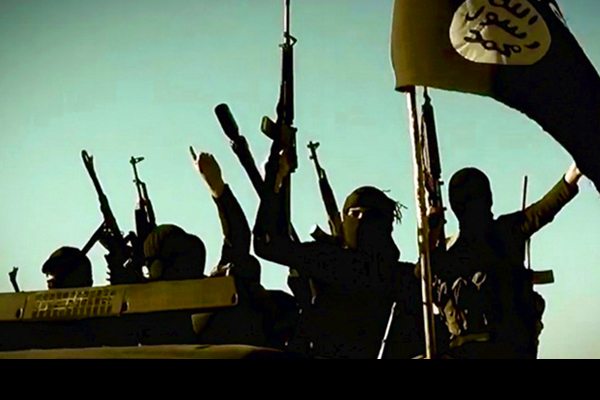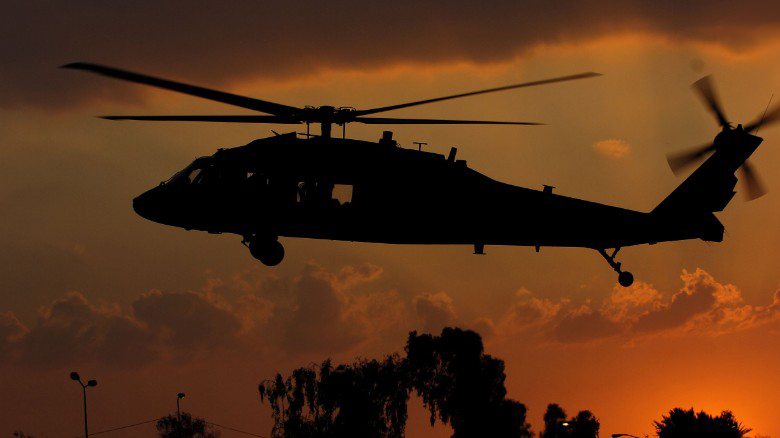CENTCOM Accused of Downplaying Threat of ISIS in Intelligence Reports: Examining the Allegations
“An old rule that I’ve used with my intelligence officers over the years, whether in the military, or now, in the State Department, goes like this: Tell me what you know. Tell me what you don’t know. And then, based on what you really know and what you really don’t know, tell me what you think is most likely to happen.” — Colin L. Powell
Four years ago, a retired FBI friend called and asked if I wanted to go with her to see Zero Dark Thirty, the movie about how the U.S. finally caught up with and killed Osama Bin Laden. Other than things like the James Bond series—which to me are simply entertaining fantasies—I usually avoid movies and TV programs that supposedly depict the intelligence community. They are usually so inaccurate it takes away, for me, any potential to enjoy the movie or TV program. I’m not alone. Last year, the New York Times interviewed several female CIA professionals and the Ladies said they were “fed up with the flock of fictional C.I.A. women in movies and on TV who guzzle alcohol as they bed hop and drone drop, acting crazed and emotional, sleeping with terrorists and seducing assets.”
In spite of my reservations, I decided to go to the movie with my friend. I’m glad I did, although my more reserved FBI friend may have regretted it when, at one point, I was laughing so hard at one scene I almost fell out of my seat. No one else in the theater was laughing. What set me off? The CIA intelligence analyst, played by the actress Jessica Chastain, was certain she had figured out where Bin Laden was hiding. Her boss wasn’t convinced and would not present her analytical conclusions to the higher ups. He didn’t feel there was enough evidence to support her case, so everyday she’d walk up to his glass cubicle door and—with an expression of righteous indignation—write down on his door the number of days that had passed since she’d first presented her analysis to him.
She reminded me of how I had sometimes behaved during my intelligence career. I, too, had sometimes resorted to “flamboyant and disruptive” behavior to get attention to what I considered important analysis. The scene also reinforced a point I’ve made a number of times during talks or in my writings: the politics of the intelligence community—its over-competitive, analytical views and/or how you organize and what approach to take to provide the best intelligence support to decision makers. There is also the usual “office politics” of any organization, military or civilian, with people competing for jobs and promotions, etc.
This brings me to what I’d like to blog about. I spent 4 years with United States Central Command’s (CENTCOM) naval component (NAVCENT) in the 1990’s, so I’ve watched with interest the unfolding controversy concerning claims that intelligence reports from CENTCOM were slanted to produce a more optimistic angle on U.S. military strategy and operations in Iraq and Syria. I first heard about it last August when the Washington Post published an article stating the Department of Defense Inspector General was investigating whistle blower claims that CENTCOM intelligence reports were painting an overly optimistic picture of the conflicts in Iraq, Syria and the threats posed by ISIS and al Qaeda.
An article published in the Daily Beast the following month provided more details reporting that over 50 intelligence analysts working at CENTCOM had filed a formal complaint with the Department of Defense Inspector General, stating that their reports on ISIS and al Qaeda’s branch in Syria were being altered by higher ups in order to present a more positive picture of operations in Iraq and Syria. According to the article, “The analysts have accused senior-level leaders, including the director of intelligence and his deputy in CENTCOM, of changing their analyses to be more in line with the Obama administration’s public contention that the fight against ISIS and al Qaeda is making progress. The analysts take a more pessimistic view about how military efforts to destroy the groups are going.”
[W]e found no evidence of politicization of intelligence in this case. Nor did we – or the Majority – find any evidence that the White House requested to, or in any manner attempted to, have the intelligence analysis conform to any preset or political narrative.
– Rep. Adam Schiff (D-CA)
The House Armed Services Committee, Intelligence Committee, and Defense Appropriations Subcommittee instituted a separate investigation and submitted an interim report last week. The key highlights were:
- Their investigation substantiated that structural and management changes made at the CENTCOM Intelligence Directorate starting in mid-2014 resulted in the production and dissemination of intelligence products that were inconsistent with the judgments of many senior career analysts at CENTCOM.
- CENTCOM produced intelligence that was also significantly more optimistic than that of other parts of the Intelligence Community (IC) and typically more optimistic than actual events warranted.
- The leadership environment within CENTCOM and its Intelligence Directorate deteriorated significantly following the 2013 departure of Marine General James Mattis and his senior intelligence leaders.
- Dozens of analysts viewed the subsequent leadership environment as toxic, with 40% of analysts responding that they had experienced an attempt to distort or suppress intelligence in the past year.
- Starting in mid-2014, CENTCOM Intelligence Directorate leadership instituted various organizational and process changes that negatively affected the quality and timeliness of intelligence production.
- Senior leaders also relied on details reported from coalition forces rather than more objective and more well documented intelligence reporting.
- The Defense Intelligence Agency (DIA) should take ownership of its role as leader of the Defense Intelligence Enterprise, and significantly increase its analytic oversight and review of intelligence products generated by the Combatant Command intelligence centers.
The Democratic members of the committee conducted their own review led by Rep. Adam Schiff (D-CA), Ranking Member of the House Permanent Select Committee on Intelligence (HPSCI). They also released preliminary findings. They agreed with some of the conclusions in the Republican report but said they found no evidence that the White House exerted influence on CENTCOM’s intelligence analysis.
Schiff stated: “The flawed intelligence that led to the 2003 Iraq War taught us that allegations of manipulation or skewing of intelligence must be taken seriously, and that policymakers must receive intelligence that is timely, accurate, and – above all – free from politics or distortion.
“Through our inquiry, HPSCI Democrats have found that between 2014 and 2015, CENTCOM created an overly insular process for producing intelligence assessments on ISIL and Iraqi Security Forces (ISF) – one that at times deviated from analytical best practices; stalled the release of intelligence products; limited the ability of CENTCOM analysts to coordinate with IC experts; insufficiently accommodated dissenting views; and negatively influenced the morale of CENTCOM analysts.”
Schiff continued, “However, we found no evidence of politicization of intelligence in this case. Nor did we – or the Majority – find any evidence that the White House requested to, or in any manner attempted to, have the intelligence analysis conform to any preset or political narrative.”
![Secretary of Defense Chuck Hagel, left, President Barack Obama, and Gen. Lloyd J. Austin III, right [AP]](https://limacharlienews.com/wp-content/uploads/2016/08/CENTCOM-President-Obama-1024x651.jpg)
A Pentagon spokesman said in a statement that the Defense Department would not comment on the congressional report while the Inspector General’s investigation continued. But he also noted that “experts sometimes disagree on the interpretation of complex data, and the intelligence community and Department of Defense welcome healthy dialogue on these vital national security topics.”
This comes under the category of “nobody asked me but” if someone from either the Republican or Democratic Task Forces had asked me to read and comment on the interim report, here’s my take:
It appears to me that what is really going on is a situation where CENTCOM got a new Commanding Officer and Senior Intelligence Officer in 2013, that some of the analysts did not like working for. This was likely due, in part, to the fact that they shook things up by reorganizing the J2 (Intelligence Department) and providing more layers than previously existed for proof reading and revising intelligence reports before they were released. Once a new Commanding Officer and new Intelligence Officer arrived in 2015, things got better at least apparently from the perspective of the analysts; by that, I mean the J2 was once again reorganized and the organization probably looked similar to what was in place before.
When you read the entire report, the Task Force reported that not all of the analysts thought the changes were a bad thing. “While the whistleblower and some analysts described the changes as a method to increase leadership control of analytic products, other analysts disagreed, explaining that they viewed the changes as a legitimate response to the increased pace of production occasioned by the ISIL (also referred to as ISIS) threat, coupled with preexisting efforts to improve the consistency and quality of CENTCOM’s intelligence products.”
I would also have told the Task Force members that, in order to better evaluate the results and recommend solutions, they needed to first understand some of the quirks of the intelligence community. There are many things that they would not find written down in any standard military rules and regulations document.
It all starts with rule number one: the primary job of the intelligence community is to provide the information in the format and timeliness needed so the decision maker and/or warfighter can make informed decisions on strategy and operations.
Whenever there is a major change in leadership i.e. the commanding officer or the senior intelligence officer, there will always be a change in the way you do business. This situation can be disruptive and can ruffle some feathers. There are two things that almost always change: the content of intelligence briefs presented to the Commanding Officer and the senior members of his/her staff and the format and text of the intelligence reports.
Looking first at the briefings, some Generals/Admirals prefer formal intelligence briefings at designated times during the week (Monday/Wednesday/Friday). Some, more often than that or, if there is an ongoing war or crisis, they may want formally scheduled briefings twice a day and impromptu, unscheduled briefings as needed. The content of the briefs varies and depends on the wants and desires of the General. Some Generals want the 20,000 feet view of the geographic region they’re responsible for; others want a more detailed presentation. Most of the time you learn what they like or don’t like through trial and error which can involve the briefer being screamed and yelled at if you don’t guess correctly. Tough love, but it works. I’m reminded of that Tom Hanks line in the movie, A League of Their Own, about female baseball players: “There’s no crying in baseball.”
There were a couple of times I felt like crying during my career in military intelligence but I sucked it up publically and called and whined about it to my father afterward. My Dad usually told me if I couldn’t stand the fire get out of the Navy and get a job as a janitor cleaning offices at night in some office building. My favorite story involves an intelligence officer who got verbally eviscerated by a group of Generals he had briefed. He simulated holding a communications device in his hand and said: “Beam me up Scotty”.
I once showed up for a briefing to a room full of Admirals, wearing a hard hat, and holding a sledge hammer. I defiantly yelled: “I’m ready to do my brief now!” They laughed then proceeded to show no mercy and pick me apart as they had every day that week in front of an auditorium full of people. They were in town for a War Game. I was designated their intelligence support for the event. It wasn’t all bad. At the end of the week, one Admiral gave me a box of chocolate chip cookies (my favorite) and another invited me to lunch with him and his staff. I finally learned the best practice was to call up intelligence officers who had worked for any new boss in the past and get the 411.
Intelligence reports
As mentioned, rule number one is you’re only there to support the warfighters and other decision makers; therefore, that is the purpose of the intelligence reports.
Next, there are three levels of warfare: strategic, operational, and tactical. Intelligence operations and reports are tailored to support each level. For clarification here are the definitions:
Strategic Intelligence
…is produced for the President, Congress, SECDEF, senior military leaders, and the CCDRs (Combatant Commanders). It is used to develop national strategy and policy, monitor the international situation, prepare military plans, determine major weapon systems and force structure requirements, and conduct strategic operations. Strategic intelligence operations also produce the intelligence required by CCDRs to prepare strategic estimates, strategies, and plans to accomplish missions assigned by higher authorities.
Operational Intelligence
Operational intelligence focuses on adversary military capabilities and intentions. It helps…commanders keep abreast of events within their area of interest and helps commanders determine when, where, and in what strength the adversary might stage and conduct campaigns and major operations. During counterinsurgency and counterterrorism operations, operational intelligence is increasingly concerned with stability operations and has a greater focus on political, economic, and social factors.
Tactical Intelligence
Tactical intelligence focuses on combat intelligence, which is used by commanders, planners, and operators for planning and conducting battles, engagements, and special missions. Relevant, accurate, and timely combat intelligence allows tactical units to achieve positional and informational advantage over their adversaries…Tactical intelligence operations identify and assess the adversary’s capabilities, intentions, and vulnerabilities, as well as describe the physical environment. It seeks to identify when, where, and in what strength the adversary will conduct tactical level operations.
In my experience, when you are part of the intelligence staff supporting what is called a Theater level command such as CENTCOM, in peace time operations, the intelligence reports and publications put out focus on strategic and operational level topics and issues. When the command is in a crisis and/or warfighting mode, the focus shifts to operational and tactical intelligence reporting.
What is the significance of this and how big is the data problem?
Exact numbers of the amount of information the intelligence community puts out are classified but every now and then you can gain some insights:
In a 2007 Foreign Affairs article, Admiral Mike McConnell, a former Director of National Intelligence (DNI) stated every 24 hours the intelligence community collects over a billion pieces of information. I’m sure that’s probably doubled in the ensuing years.
All intelligence agencies and commands put out daily reports ranging from flash news type articles to daily newspaper formats to magazine style, and even books. All of those in charge of various intelligence collection platforms also put out a huge amount of information as well. Adding more to the pile of data, both operating forces and their supporting intelligence staff put out daily reports about how their operations are doing. It’s from these reports that a lot of the analysis of how well our strategy is doing and how accurate the intelligence analysis is comes from. This last area is what has garnered the most controversy in media reports.
The Task Force report states:
Interviewees indicated that Intelligence Directorate senior leaders regularly pressed CENTCOM analysts to better align their products with, or incorporate inputs from, operational reporting. Senior leaders voiced their opinions that CENTCOM analysts did not adequately account for operational details and observations provided by U.S. and coalition units directly engaged in countering ISIL (ISIS) or working with those who were. Analysts indicated that senior leaders often countered intelligence reporting with such information, although it was not reflected in serialized intelligence reporting. While senior leaders denied that operational reporting was biased in a particular direction, multiple analysts disagreed, noting that the deference to operational reporting resulted in analysis that was more positive regarding the capabilities of the ISF and the progress of the fight against ISIL than could be justified or supported by the vetted, serialized intelligence reporting on which analysts customarily rely.
I’ve worked for intelligence organizations that heavily edited or changed intelligence reports written by analysts, but most of the time I’ve worked for organizations that did not edit or change your work. Granted, your analysis had better be well grounded. It was also expected that you conducted extensive liaison with analysts at other intelligence commands and organizations.
The bottom line for me is this question: did senior CENTCOM intelligence leaders pressure analysts to slant their reports to make it look like our military strategies in Iraq and Syria were working? I think that question is best answered by looking at the results of our strategy. The Department of Defense reports that ISIS’s control of territory in Iraq and Syria peaked in August 2014. As of April of this year they had lost control of 45% of that territory in Iraq and 20% in Syria. More recent reports have said ISIS has lost 50% of its territory in Iraq.
Last week Lieutenant General Sean MacFarland, the departing Commander of Combined Joint Task Force Operation Inherent Resolve remarked during a press conference:
You don’t hear the word “stalemate” anymore. That’s because over the past year with our partners, we were able to seize the initiative. We now talk about maintaining the momentum of the campaign in both Iraq and Syria. In other words, we spend more time thinking about what we will do to the enemy than we spend thinking about what the enemy might do to us.
I can’t speak for all intelligence analysts but I know that, sometimes, when supporting a war or crisis, I had so much information and data to go through I was usually just focused on what happened yesterday, what’s happening today, and what will happen tomorrow. It was difficult to find the time to take a step back and look at 6 months. I would suggest to the Task Force that they look closely at the timelines of when the tide started to turn: They should not just look at the work of the CENTCOM intelligence types, but the rest of the intelligence community reporting at the same time. For example, when did they start reporting the gains of the Iraqi Security Forces with assistance from the U.S. against ISIS?
The General indicated that part of the success was the result of modifying their training of the Iraqi Security forces: “We’ve shifted away from counterinsurgency towards combined arms maneuver training, teaching the Iraqis how to integrate infantry, armor, artillery, engineers, aviation and other combat multipliers to achieve an overwhelming advantage at the right place and time on the battlefield”.
I know, at times during my career, I was so busy focusing on what the bad guys could or might do, I didn’t pay close enough attention to our strategy as it was developing. Sometimes, you may not see how the new strategy is unfolding, but the men and women working closely with the Iraqi forces, for instance, have a better sense of how things are going. Intelligence types have to, by necessity, focus on the worst possible situation, so that we can warn folks. Conversely, the men and women developing strategy and policy have to focus on the best outcome possible. This can be a good thing. The best intelligence staffs provide someone to participate in operational planning alongside the warfighters, in order to give the planners some sense of what the possible reactions of the bad guys might be in various scenarios.
In the report, the Joint Task Force says the CENTCOM staff has been operating at an accelerated rate for 10 years. That is wrong. CENTCOM has been working in overdrive since before the start of the first Gulf War. Most Americans are not aware that, for all intents and purposes, the first Gulf War did not end. Because Saddam Hussein did not abide by the agreed upon terms, CENTCOM led an international coalition enforcing UN Sanctions. Some of the more visible operations were the enforcement of no-fly zones and a maritime embargo. The CENTCOM intelligence team is one of the most talented in military history and pioneered many of the intelligence practices and techniques that are commonly used today like using new technology to provide real time intelligence support to combat operations from stateside locations.
I think the last point I would make concerns the complaints about reorganizing: Warfighters commonly say: on the first day of a war or crisis, the operational plan is out of date. I’ve found that on the first day of a crisis or war the intelligence architecture, or how the command’s intelligence organization is set up, is also out of date. Normally, you have to reorganize quickly to fill up gaps in support. Often, you do not have the personnel or hardware and software you need. For instance, without exception, every time I’ve participated in providing intelligence support to a war or crisis, the communications system gets overwhelmed and new technology is needed.
Here’s how that looks: I was assigned to CENTCOM’s naval component (NAVCENT) after the first Gulf War ended. NAVCENT’s main headquarters was on a ship home-ported in Bahrain; but I was assigned to their small planning staff co-located with CENTCOM’s Headquarters in Tampa, Florida. Upon arrival, I learned that since Saddam Hussein was still “acting up”, CENTCOM was responding by setting up various military measures supporting UN sanctions. For a more detailed explanation, go here.
I also learned that the NAVCENT Headquarters’ staff was moving its personnel ashore. The intelligence staff would need work space, computer hardware and software, a communications facility, and more personnel to operate it. As the intelligence planner, I was responsible for finding a solution. I called up the technology people at Naval Intelligence Headquarters (ONI). It turned out that one of the senior staff members was vacationing with his family at Disney World in Orlando. The next day he drove over, I presented my problems to him and what I needed in return. He called me back at 9PM that evening, said he had talked to the Director of Naval Intelligence and had been told that they would give me whatever I needed. They provided all of the equipment, personnel, and even a new building at no cost to my command or CENTCOM. When I presented my solution to my formal chain of command I was able to say that all ONI needed was the formal request, but in fact they had already started moving forward to make things happen.
Basically, by these actions, what I did was help facilitate a reorganization of the NAVCENT intelligence organization. NAVCENT’s senior intelligence officer was very supportive since it would have been hard for him to coordinate this from his office in Bahrain and he was heavily tasked and could not spare sending back to take care of it. The CENTCOM J2 was also supportive. In spite of the support, many considered me “disruptive” and felt I violated military protocol. It’s the nature of things. My story had a happy ending. These types of challenges and situations are the norm, not the exception, for those members of the intelligence community supporting military operations.
As always, my views are my own.
Gail Harris, Lima Charlie News
Captain Gail Harris (U.S. Navy, Ret.), was the highest-ranking African American female officer in the US Navy at the time of her retirement in 2001. Her 28 year career in intelligence included hands-on leadership during every major conflict from the Cold War, to El Salvador, to Desert Storm, to Kosovo, and she was at the forefront of one of the Department of Defense’s newest challenges, Cyber Warfare. Gail also writes for the Foreign Policy Association, is author of “A Woman’s War”, serves as Senior Fellow for the George Washington Center For Cyber & Homeland Security and is a Senior Advisor for the Truman National Security Project.
Lima Charlie provides global news, insight & analysis by military veterans and service members Worldwide.
For up-to-date news, please follow us on twitter at @LimaCharlieNews






![Israel-Hamas Cyberwar, when old warfare meets new [Lima Charlie News]](https://limacharlienews.com/wp-content/uploads/2019/05/Israel-Hamas-cyber-warfare-01-e1558501438770-480x384.jpg)
![Image Huawei – China’s telecom giant hits a giant wall [Lima Charlie News]](https://limacharlienews.com/wp-content/uploads/2019/01/Huawei-–-China’s-telecom-giant-hits-a-giant-wall-480x384.png)
![Image U.S. 'Space Force' looking more and more like space reality [Lima Charlie News]](https://limacharlienews.com/wp-content/uploads/2018/08/Space-Force-looking-more-and-more-like-space-reality-480x384.png)
![Image GailForce: Blinking Red - Cyber War and Malign Influence Operations Today [Lima Charlie News][Graphic: Lima Charlie News]](https://limacharlienews.com/wp-content/uploads/2018/08/GailForce-Blinking-Red-Cyber-War-and-Malign-Influence-Operations-Today-Lima-Charlie-News-01-480x384.png)

